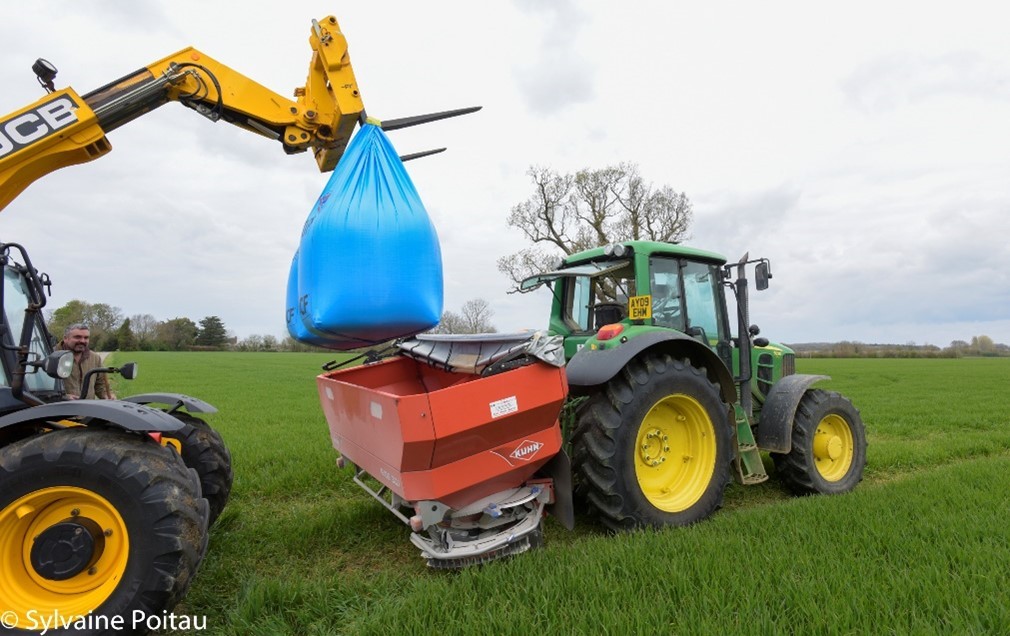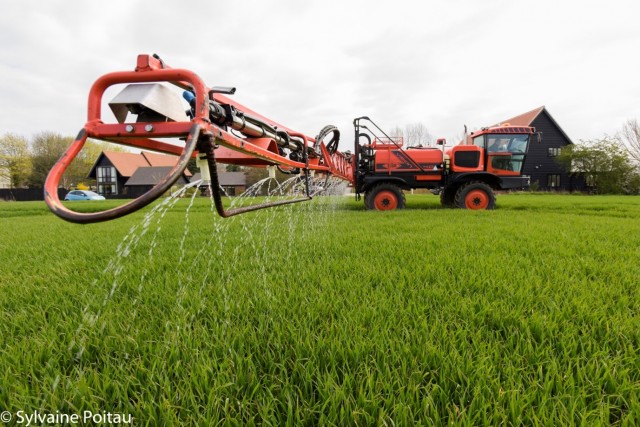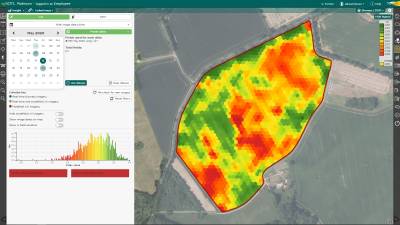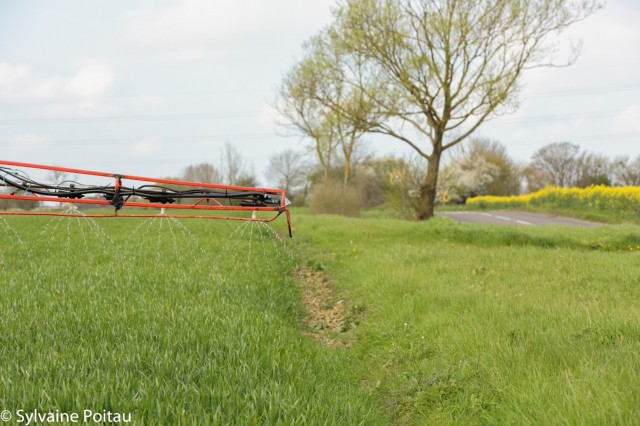Value of nitrogen: the importance of well-informed decisions
The word 'unprecedented' very accurately describes what has happened in the fertiliser world this year but even that doesn't seem enough to convey the exceptional rise in price and shortage of supply. In 25 years, I haven't seen anything like these price levels; to be honest I don't think I expected to see them in my working life and I still have a reasonable amount of time left!
Given the situation we're in, it is very easy and understandable to make emotional choices based on the shock of where we are. However, it is more important than ever to have all the facts and be well informed so, with that in mind, I hope you'll find this blog a useful guide for making the right decisions on fertiliser.
Understanding your breakeven ratio (BER)
You may have already heard a lot about BER because it is fundamental to understanding how the cost of fertiliser and value of grain influence how much nitrogen should be applied. It all hinges on a term called 'economic optimum nitrogen rate' - the rate of nitrogen that gives you the best economic return. Put simply, applying more nitrogen will give a yield increase but not enough to pay for the extra fertiliser, while applying less will reduce the fertiliser cost but the value of yield loss will be greater. So, with the recent changes to the price of fertiliser and value of grain plus your individual crop requirements, hopefully you can see just how this economic optimum rate can change.
Calculating the BER takes account of this relationship and indicates what adjustment to N rate should be made. You can work it out by taking the cost of 1kg of nitrogen and dividing it by the value of 1kg of grain. If we look back to earlier this year, the example below demonstrates how this would work:
What does it mean to have a BER of 4.9?
The assumed BER for which all the recommendations in RB209 are based on is 5, so no adjustment would be needed at all at 4.9. If the BER falls significantly below 5 then there is justification to apply more nitrogen as the economic optimum rate has changed and conversely, if it is above 5 then less should be applied. Soberingly, I've had to extrapolate the table below further to the right but it gives some guidance on what adjustment should be made to the nitrogen recommendations for different BERs.
For small changes to the BER it's not always worth making the adjustment as it barely affects the economic return. This year though I'm sure a number of you will find that adjustments are necessary and in such cases it is vital to work out the extent required. The recent increase in value of grain has helped but even with that the BER for current fertiliser prices is heading towards 10, meaning that a reduction of 40-50kg/ha is potentially justified.
What if you already have fertiliser in the shed?
This is a common question this year and brings me onto an essential step - working out your average nitrogen cost. It is this figure that you should use to calculate the BER and not just the cost of any fertiliser still to buy.
For example, someone who purchased half of their fertiliser in the early season market would have a breakeven ratio around 7 (even purchasing the balance at the current levels), resulting in a reduction around 20kg/ha instead of 40-50kg/ha.
Learnings from our trials
I know that even at this point some of you may still be questioning the value of purchasing more (or any) fertiliser, so I thought it would be useful to highlight what the return on investment is for nitrogen fertiliser based on some of our 3D Thinking nutrition trials from this harvest.
- In the four trials where we had zero nitrogen plots, the average yield increase we saw was 5t/ha which at £200/t would be worth £1,000/ha. This returned a margin over input cost (MOIC) between £840/ha at 80p/kg N to £600/ha at £2/kg N.
- In one of the trials (column 4 – Bleasby 1st WW in the table below), we had a reduced nitrogen dose (column 6, received 50kg/ha less, 150kg/ha) which still produced 4.1t/ha; only 0.77t/ha less yield. This highlights that the initial cut in nitrogen dose will usually have a relatively small impact on yield.
- It is interesting to note also that, even at £2/kg, this still returned a lower margin than the 200kg/ha N rate and would only have produced a better margin if the nitrogen was over £3/kg. If you're facing reduced nitrogen applications, I hope this goes some way to offering some confidence that this approach is the right one, and it should only have a relatively small impact on overall yield.
As for when to make the reduction, I would advise generally reducing all applications slightly or at least the final two applications rather than cutting one out altogether. We know that 'little and often' is more efficient for crop uptake than fewer or single big doses.
For those looking at the yields with zero nitrogen, it's also worth noting that the specific weights were 3.2kg/hl lower on average and protein was 1.8% lower. As a result, quality was significantly affected even though they received all the other inputs (nutrients and ag-chem) at the same rates.
Fertiliser availability
Although I've stressed how important BER is for calculating how much fertiliser you may still need to purchase, there is a real risk that actual physical availability in time for usage next spring - starting in less than four months - will limit application rates further. Increases in cost and restrictions on the availability of sea and land freight are affecting all commodities including fertiliser. With this in mind, please work out how much fertiliser you potentially still need to purchase at your own BER and make every effort not to miss any opportunities over the coming weeks to secure this tonnage.
Your biggest priority: nitrogen use efficiency (NUE)
Maximising the efficiency of every kilo of nitrogen applied should always be a key focus but emphasis on this is greater than ever this year.
A lot of it is to do with attention to detail and while changes on their own may only result in small gains, together they can add up to a significant step forward overall. Ultimately, I think it's important to address the following points:
Limit any losses of nitrogen from the system
- Unfortunately, the opportunity has already passed for this if you haven't planted a cover crop to hold onto the nitrogen left in your soil after harvest. However, it's important to remember that this captured nitrogen in green material needs time to breakdown to become available for uptake by the following spring crop, especially a short season cereal crop.
- Applied nitrogen can be lost in the same way as above so be careful with early applications when the crop is only just starting to grow and take nitrogen up after winter. Consider the soil conditions, watch forecasts and only apply small amounts of nitrogen if there is any risk of losses.
- Nitrogen can also be lost to the atmosphere as ammonia from urea, so make sure this is applied during periods of lower risk (cool and moist soils) or purchase urea that has been treated with a urease inhibitor such as SustaiN to protect it from this loss. If you're using liquid fertiliser that always contains a proportion of urea, you can protect that element of your programme by including a urease inhibitor like Limus Clear as a tank mix when conditions increase the risk of losses.
Tailor your application rates to crop potential and your specific situation
- Assess the level of nitrogen in some barometer fields around the farm through deep core mineral nitrogen soil sampling (such as CF Fertilisers' N-min service or the deep N sampling and testing service from our precision farming division, SOYL) to adjust the nitrogen rates required.
- It is also worth looking back at your historic grain protein and nitrogen levels as these, in conjunction with the yields achieved and nitrogen rates applied, can be extremely useful in judging how close your overall rates were to the economic optimum in the past to then adjust future application rates. To make this even more accurate going forward I would strongly encourage you to take grain samples from individual fields to see the variation across your farm, soil types and rotational positions etc. to adjust nitrogen rates for future crops. To help with benchmarking, all of this data can be monitored over multiple seasons with MyFarm.
- Constantly judge the potential of your crops through the spring to assess whether they should still receive the planned nitrogen doses or whether nitrogen could be moved to fields with higher yield potential. Satellite biomass imagery is a fantastic way to remotely assess this and make decisions on individual fields. SOYL offers a really comprehensive biomass imagery service, strengthened even further by the recent adoption of radar imagery which means crop performance can be scrutinised by satellite through the key application period even in significant cloud cover.
- This alteration to application rates between fields could be taken one stage further by taking this adjustment within the field and varying the application rates based on those all-important biomass images and assessments of crop potential. Such an approach could be deployed with a variable rate nitrogen service such as that from SOYL.
Thinking about other nutrition products
- Organic manures and waste products can supply significant amounts of nitrogen and other nutrients but it is really important to integrate these efficiently within the fertiliser programme. Laboratory analysis from a representative sample can help determine the level of nutrition inherently in the material, but using this in conjunction with the freely available MANNER NPK software will highlight when and how best to apply the material to minimise losses and maximise the nutrients available to the crop.
- Foliar nitrogen products can be very efficient at supplying nitrogen straight into the crop by bypassing the soil but there are limitations as to how much can be delivered this way, especially with simpler foliar urea products. More crop-safe products like Nutrino Pro allow reasonable amounts of nitrogen to be applied even in conjunction with ag-chem applications and could be useful where nitrogen rates have been restricted by cost and/or availability. It is worth noting, however, that these products are generally more effective in crop situations where later applications of nitrogen can extend canopy duration to significantly improve yield, such as in oilseed rape, maize and potatoes.
Don't miss any opportunity to maximise efficiency
- Some growers may be contemplating omitting sulphur from their fertiliser programme to save costs – my advice is don't do this. It could significantly affect how well any applied nitrogen is used by your crops. A reduction in line with nitrogen is less risky but do not leave it out altogether. If you're struggling to source a suitable NS fertiliser, it's worth noting that there are polysulphate-based products that can very economically apply sulphur to your crops. These products also apply K and potentially P, both of which can support crop growth and nitrogen utilisation.
- Anything you do to maximise the rooting potential (depth and density) of your crops will increase nutrient uptake and efficiency. This autumn has been relatively kind, with really good seedbeds and establishment so crops are already set to root very well. Even so, it is as important as ever to do everything you can to give your spring crops the best possible start. It is worth noting there are other nutrients, in particular phosphate and biostimulants (e.g. phosphites), that can also encourage greater rooting.
- Accurate application is the final but important detail to address. Please make sure your spreaders and sprayers are fully tested and checked so there isn't a loss in efficiency; something which will have even more impact on yields and quality if rates have been reduced.
Helping you make the most important decision for your farm this year
I fully appreciate there is a lot to understand and digest here, but I return to one of my opening comments: it's paramount that any decisions made relating to fertiliser are well informed and based on facts, taking into account your individual requirements and circumstances.
Making reactive, even spur-of-the-moment choices can be tempting in the current climate, especially when you consider recent events in the market have shocked the whole industry. However, the fundamental risks associated with that style of approach really can't be ignored. The reality is that there is a lot to consider but importantly, you don't have to do it on your own. Our experts are here to work with you and share insight, and we will always encourage you to seek advice and ask questions.
If there's anything mentioned above that you still feel unsure about or which you'd like more information on, please speak to your local Frontier contact. Alternatively, to get in touch directly with our team you can reach us here.
As a subscriber, you’ll receive email alerts each time a new blog is published so you can always stay updated with the latest advice and insights from our experts











Comments